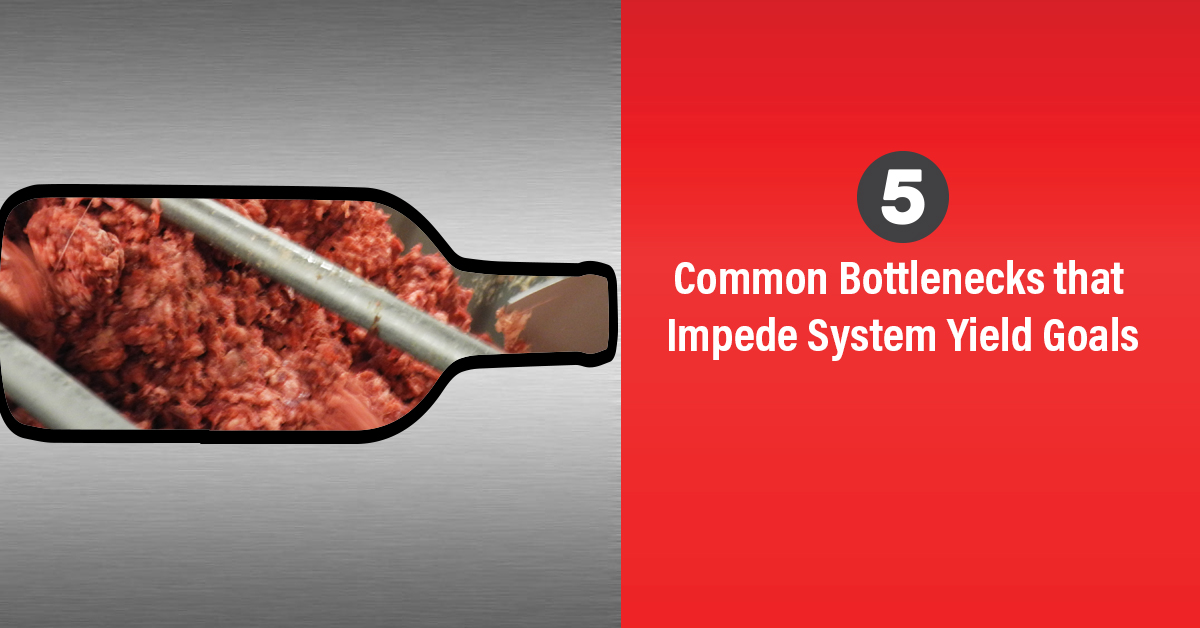
Our service techs, engineers and application experts have pinpointed five most-often congested production areas and processes observed in food manufacturing plants:
1. Underperforming grinders
Grinders underperform due to dull plates and knives and other worn parts. Adjustment of the HP/RPM/Pitch can be made to increase capacity. If not properly maintained, the pin and bushing will wear on the head of the grinder and over time, will become a throughput issue.
The root cause of dull plates and blades is often because the grinder is running dry. The grinder must always be lubricated with product: If the operator looks away for only a few seconds, the blades and plates will be ruined. Some processors use level sensors that shut-off the grinder before it runs dry and is automatically controlled to turn on when the product is running.
2. Over-blending
Over-blending product is a waste of production time and efficiencies. Sometimes the blender is overfilled to increase production. The consequences are extended load/discharge and blend cycle times. A slight increase in the batch size leads to losses in the overall production rate with a sacrifice in quality and accuracy.
While the equipment may be the wrong style for the application, a different agitator may produce a quick, effective blend. It may also be a process issue where the recipes and timing require tuning to control the blender more efficiently.
3. Manual unloading
When the blender or mixer needs to be manually unloaded, several minutes of production are lost. The equipment must be shut off, the operator must manually remove product around the doors, then close the doors before taking the tote by fork truck to the dumper.
Screw conveyors, metering screws or pump feeders may be able to be planned into the system to automate the process, even as a retrofit, if the floor layout allows.
4. Overtaxed mixers
Mixers are the workhorse of the grinding and/or blending lines. It is vital to keep them feeding downstream operations. Automation of the unloading operations through metering screw conveyors and pump feeders can help to keep the mixer running continuously.
Another issue is the horsepower specifications. If CO2 is used in the process, it causes the product to harden and it can tax the agitator and motor and may even cause damage to the mixer if not specified correctly for the application.
5. Ineffective loaders
Some processors struggle with effective loading using off-the-rack equipment. Screw conveyor systems can be designed for the application to provide the best flighting and spacing with tighter tolerance for positive conveyance and the fastest feeding possible. Self-clean-out solutions can further increase loading performance.
If you have any questions or have an application to discuss to remove your production bottlenecks, call Mepaco at 920-356-9900 and we will put you in touch with a specialist.
